3 Hidden Sustainable Gems in Panama for Eco-Friendly Travelers
Travel to Panama, live an epic immersive experience away from the crowds, and make a difference. From pristine beaches and majestic wetlands to breathtaking tropical jungles, discover the wonders of ecotourism in stunning Panama’s sustainable destinations.
Start a mindful journey to the Gulf of Montijo in search of dolphins through bird-rich wetlands, contemplate mangrove forests that combat global warming, and delight with exquisite fresh seafood cuisine prepared by local fisherwomen, “Las Aventureras del Golfo” (The Gulf Adventurer). Reach “The Sunset Coast” in Mariato and help their communities save endangered sea turtles. It’s a world that few outsiders ever get to see.
Go further along Panama’s coast until you disembark at Coiba, with its exceptional beauty and unique biodiversity, recognized as a World Natural Heritage Site by UNESCO because of its universal exceptional value.
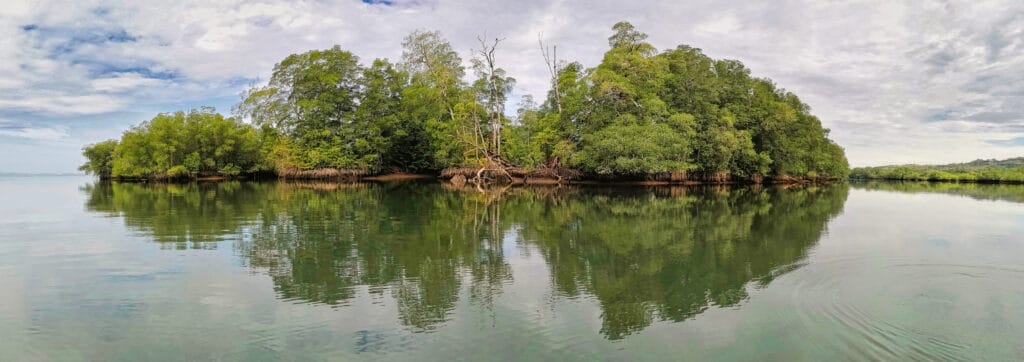
These places will provide you with a sense of satisfaction and tranquility when you return home, knowing that you have made a positive impact on the places you visited, supporting the right causes and local communities.
Traveling in a sustainable way involves forgoing visiting places that are already overwhelmed by the impact of tourism.
It’s embarking on a trip, about as far off-grid as it gets, as you cruise the lonely coasts of the Panama Pacific Ocean and explore waterfall-striped tropical forests and white-sand pristine beaches.
The Gulf of Montijo’s Wetlands, The Ocean’s Maternity Ward
With the International RAMSAR designation, this natural wildlife reserve spans over 97 thousand hectares. It’s a stunning wetland paradise. It is home to diverse wild creatures, including crocodiles, stingrays, numerous migratory and local seabird species, the resident dolphin family, endangered sea turtles, and even sharks.
Lining the coast plays an essential role in maintaining the ecological health and sustainability of the region, providing vital breeding and feeding grounds for wildlife, including hundreds of marine species.
80% of the Ocean’s Biodiversity Depends on Lush Mangrove Forests
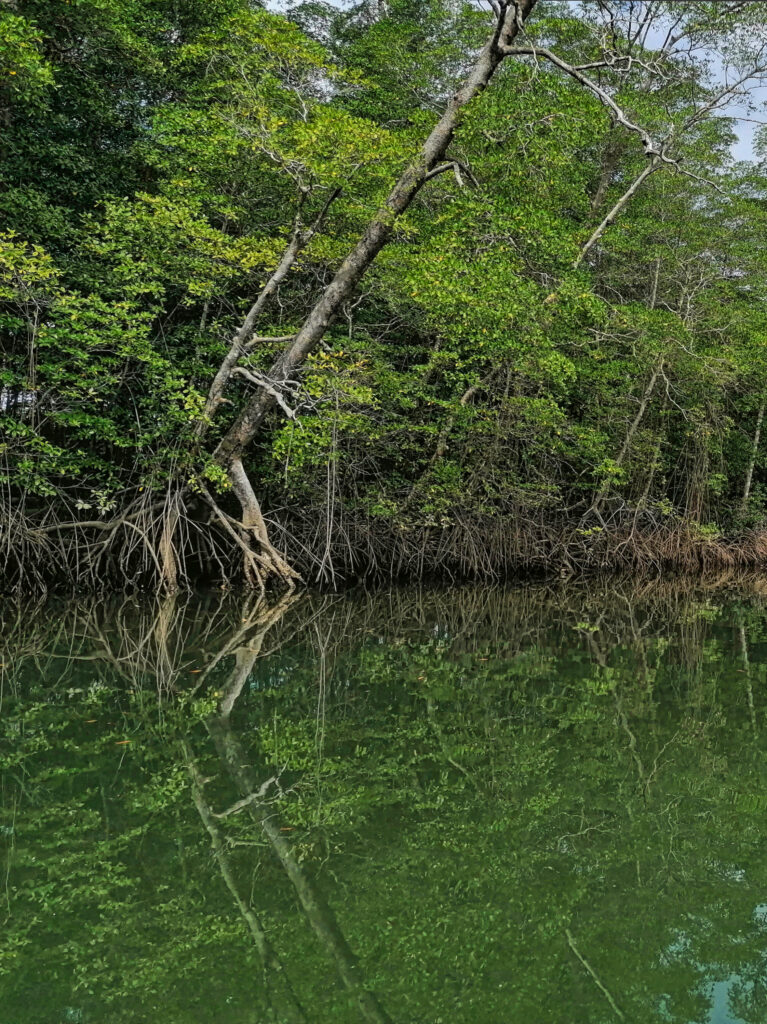
The mangrove forest-covered land has been found to be incredibly effective at absorbing more carbon dioxide than tropical rainforests, combating global warming, offering protection against flooding, and being a vast food source, making it a critical component of the reserve’s ecosystem.
For nearly a decade, initiatives on sustainable tourism, climate change resilience, gender equity, sustainable fishing techniques, and the adoption of new technologies have been led by the MarViva Foundation, with the assistance of the Albatros Media Foundation and other national and international organizations. Together with the coastal communities, we are looking to protect this area and its invaluable marine resources.
Visitors can embark on boat and kayak tours through the mangroves for an immersive experience into an intimate connection with an extraordinary ancient fishing village culture and exceptional flora and fauna.
Leaving without tasting its exquisite seafood-based local cuisine would be a missed opportunity that you will regret. As the island lacks electricity, the freshness of seafood caught by fisherwomen shortly before being served is the secret behind its exceptional taste that leaves an unforgettable impression. Yes, Leones Island fisherwomen fish with key sustainability practices, cook, and serve you delicious seafood.
The introduction of tourism has provided an additional source of income for the local residents, who previously relied solely on fishing and selling their catch to intermediaries at an unfair price. This resulted in a vicious cycle of poverty.
The Gulf is also home to many small islands that offer remote and untouched beaches, and the wetlands are a popular spot for bird watching. Guided tours are also available to help visitors get the most out of their experience.

Mariato: The Sunset Coast & Sea Turtles Nesting Paradise
Best of all, there are more than 26 beaches with incredible sunsets, powerful surf breaks, and local sea turtle conservation programs.
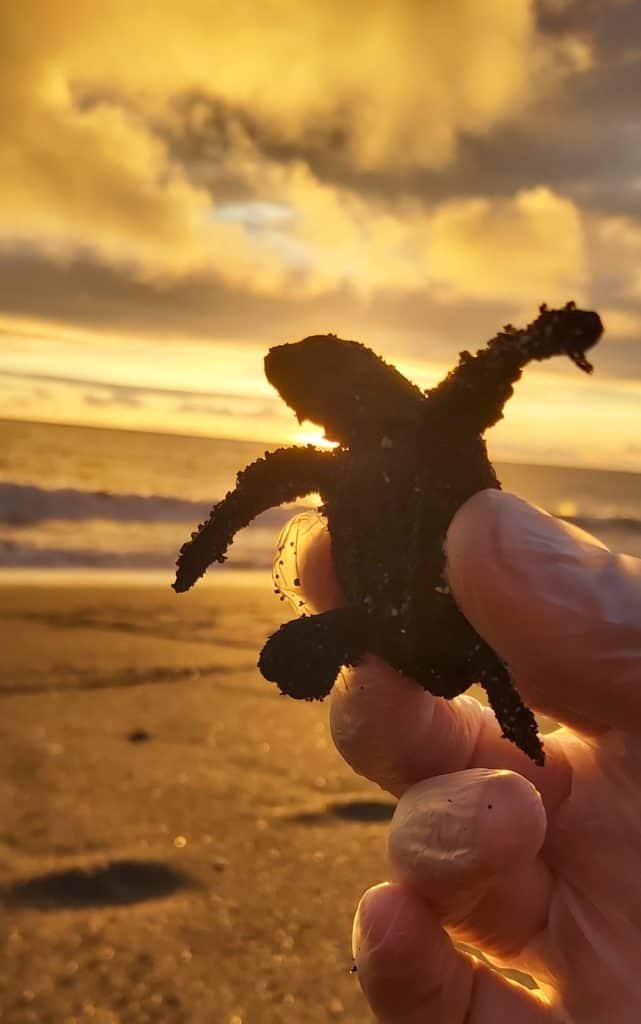
Mountains wrapped in a thick layer of tropical primary rainforest are divided by hundreds of tributaries that look to caress the sand of the sea.
Low-impact tourism is at the heart of the Sea Turtle’s EcoRoute, created by 13 local families, the Water and Land Foundation, and other local community-based organizations.
To achieve the sustainability of its primary mission, to save sea turtles. They organized activities and tourism-immersive experiences to make visitors fall in love with them. From hiking and kayaking mangrove trails, cow milking, and traditional cheese preparation to learning how they cultivate the land, understanding the ancient process to extract sugar, or making Panamanian hats and other handicrafts, these are some of the many activities they have prepared for you.
The magic is not only in the tenderness of the four sea turtles’ endangered species. You will find it in the warmth and friendliness of the community, with whom you will share and get to know how they really live.
The residents of Mariato learned that their conservation efforts could only be sustainable with the help of tourism; visiting and participating in their activities provides the boost that the community and its extraordinary biodiversity need.
A Glim of Coiba, a Living Laboratory
Coiba National Park is a stunning archipelago consisting of 38 unspoiled islands and over a hundred islets. Its main island, Coiba, emerged from the ocean’s bottom 60 million years ago after a volcanic eruption in the Galapagos. The movements of the earth’s tectonic plates drifted it through the ocean to its current location.
Pirates and pearl hunters used it as a center of operations, keeping everyone away for hundreds of years. Finally, it was Panama’s most feared prison island for almost a hundred years.
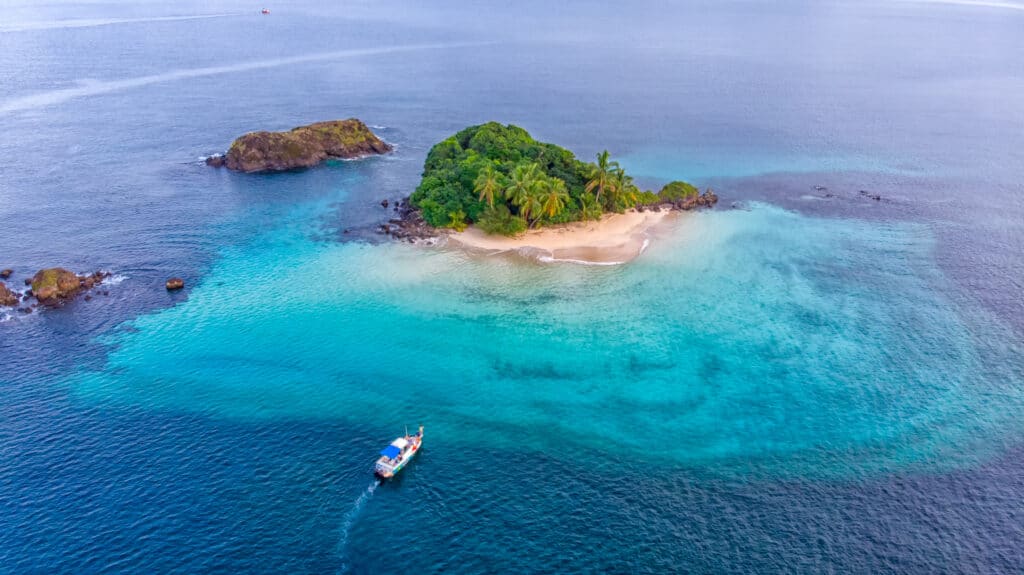
Coiba has been designated as a UNESCO World Natural Heritage Site since 2004. 80% of the island consists of untouched primary tropical forests. Additionally, it boasts the most extensive coral reef community and has the highest concentration of hawksbill turtles in the Eastern Tropical Pacific.
It’s One of the World’s Most Biodiverse Zone
Hundreds of endangered species of birds and marine animals, including sharks, American crocodiles, dolphins, whales, and manta rays, roam freely, and it is the last refuge of the scarlet macaws that are in the wild in Panama. The area’s rich biodiversity makes it a living laboratory, where new plant and animal species are continually discovered every year.
With some of Panama’s most beautiful beaches to relax on, a primary rainforest and mountainous interior to discover, and spectacularly diverse colorful coral, you will be amazed by the sheer variety of marine life. Practicing snorkeling, diving, kayaking, stand-up paddling, or trekking are the perfect ways to appreciate this subtropical gem.
When you pay the park entrance fee, you are helping to safeguard and track hundreds of endangered species. Coiba National Park knows from the beginning that protecting its biodiversity means working with local people, so 22% of the income from national park fees and visitor permits goes back into its communities.
And when you stay in coastal communities and hire tourist services, you are facilitating their economic development.
They are All Part of Something Biggest
All these places are fully interconnected, and the wildlife knows no human-made boundaries. For them, it is a massive marine highway that creates a mega habitat that we still don’t fully understand.
As a glimpse, hammerhead shark mothers give birth to their young in the Gulf of Montijo, while Coiba and Cebaco Island are their favored dwelling spots. Meanwhile, Coiba offers a sanctuary for hawksbill turtles and other sea turtle species that lay their eggs on Mariato’s nesting beaches.
If you visit us between August and October, you may even be lucky enough to catch a glimpse of migrating Humpback whales, which, after an 8,000 km journey, mate and give birth along our shores after feasting off the southern coast of Chile for months. Its mysterious songs and amazing jumps will captivate you forever.
Incredible, and incidentally, some of them have been mating with their northern relatives, giving birth to a new whale species. Our coast serves as a refuge and the crucible of life.
Don’t forget the majestic whale shark, a true oceanic wanderer who travels thousands of kilometers at a leisurely pace, traversing vast distances with ease.
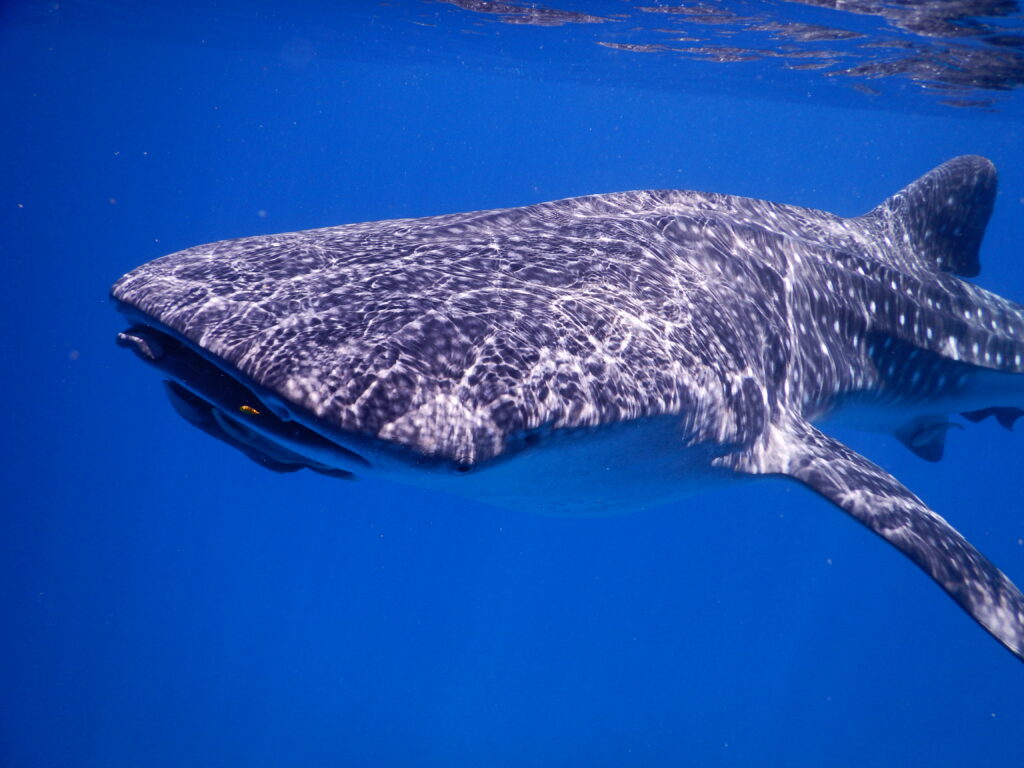
Coiba National Park is situated within the Eastern Tropical Pacific Marine Corridor (CMAR), while the Gulf of Montijo and Mariato are located in their buffer zones.
The CMAR is a collaborative network of marine protected areas (MPAs) created in 2004 by Colombia, Costa Rica, Ecuador, and Panama with an extension of over 2 million square kilometers. Its purpose is to promote the conservation and sustainable utilization of biological diversity in the Eastern Tropical Pacific, which is globally recognized for its world-renowned ecosystem that connects Cocos, Coiba, Galápagos, Gorgona, and Malpelo Islands.
It’s a Superb Oceanic Highway
Home to four islands declared World Heritage Sites by UNESCO, which means they are unique places on the planet, are located in the equatorial climate zone, and have the highest world’s endemism indexes.
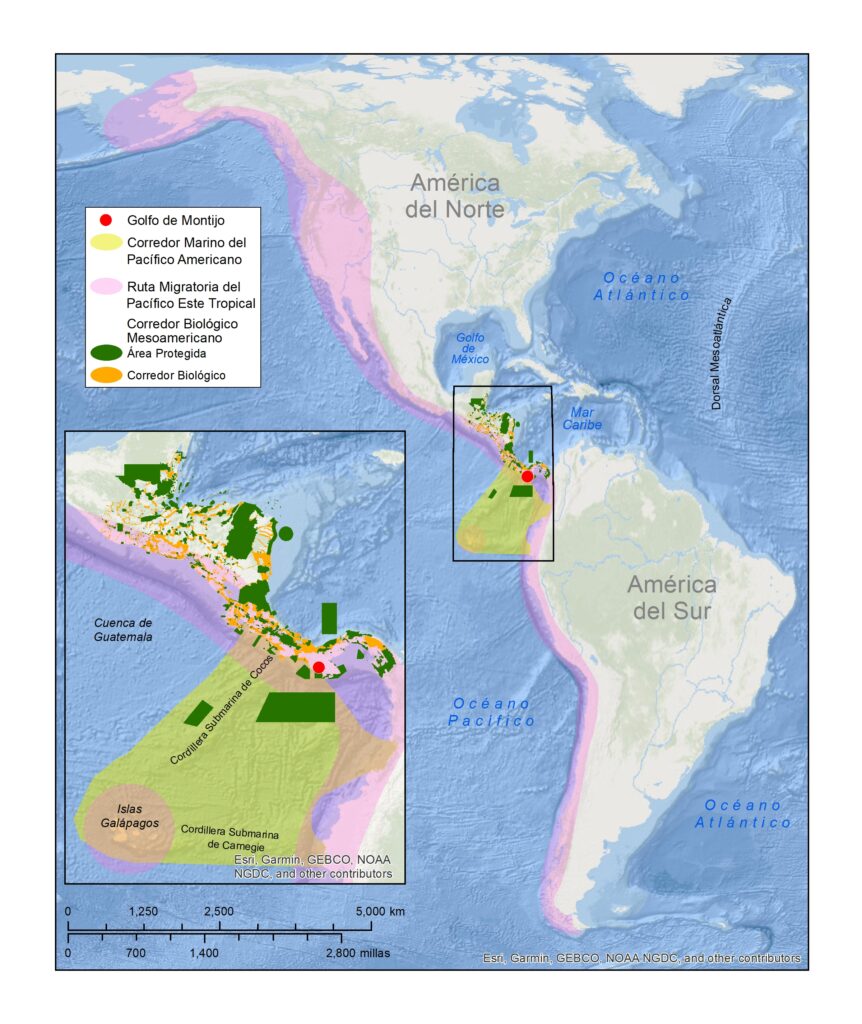
The CMAR’s members work together to promote scientific research, conservation, and sustainable development in this zone, which is recognized as one of the most biologically diverse regions in the world and is home to a wide variety of unique marine species.
Despite our best efforts, we have not yet comprehended all the intricacies of nature. The delicate equilibrium that sustains our planet doesn’t rely on human intervention, but it does require safeguarding from those who have yet to grasp the significance of cherishing our only abode, the Earth.

